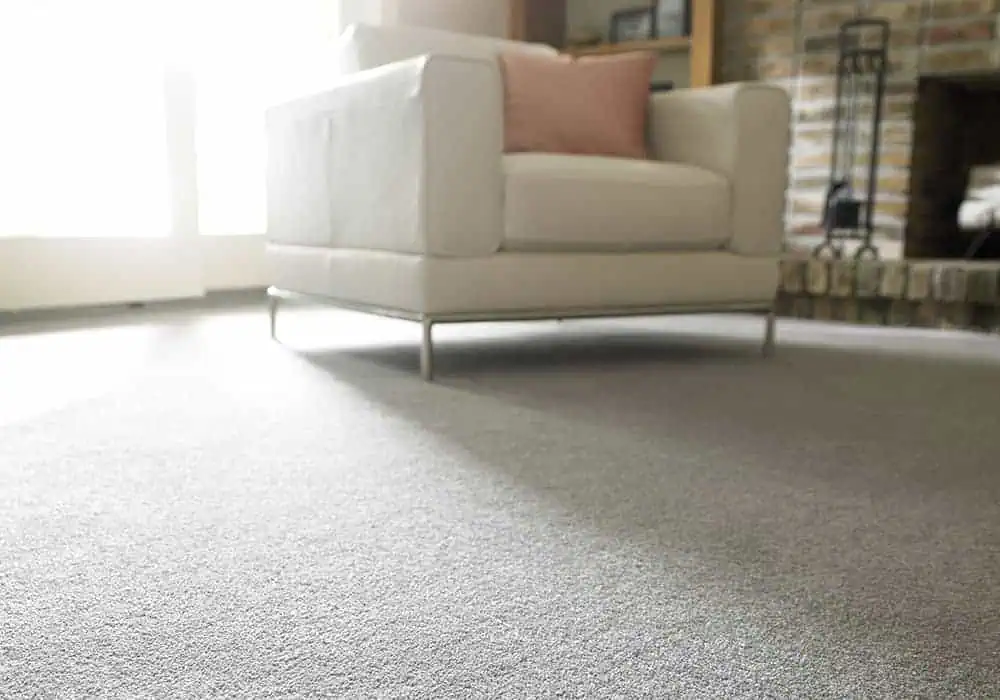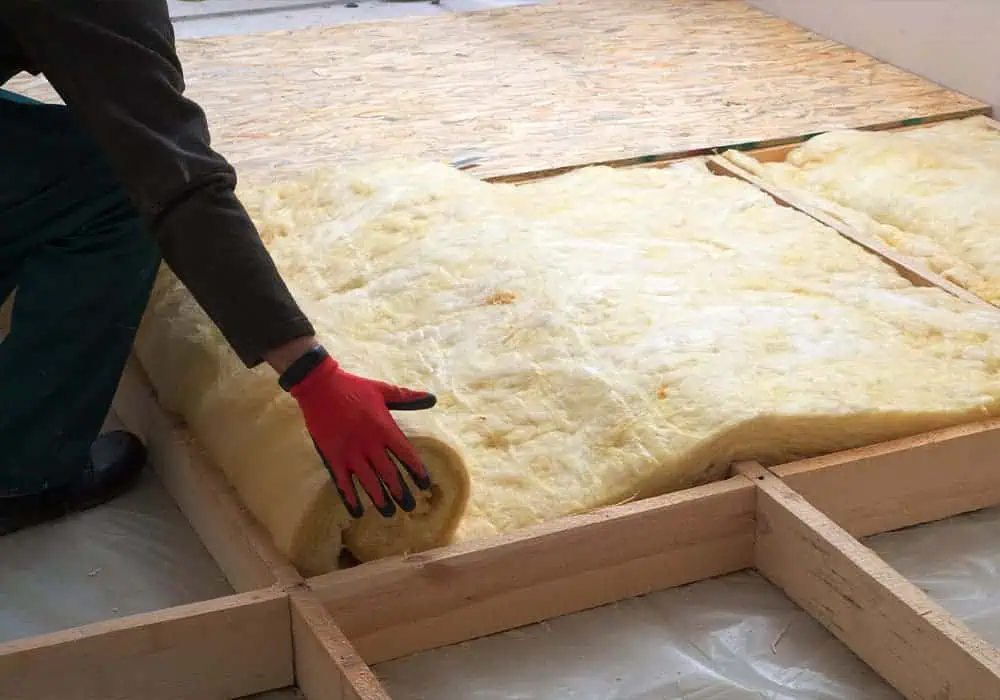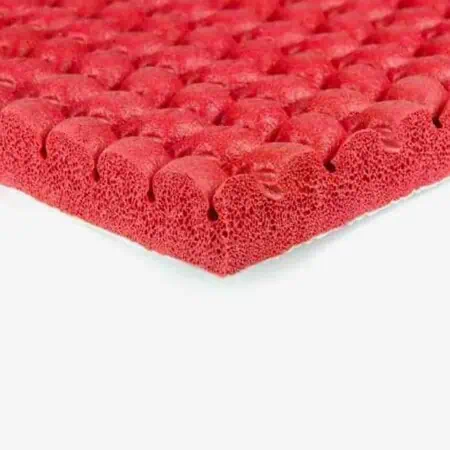In the hustle and bustle of daily life, finding peace within the walls of our own homes has become more important than ever. Whether it’s the sound of footsteps, loud music or just the general din of a busy household, noise can easily travel through floors, disrupting the sense of calm we all crave.
Soundproofing your floor can be a great way to reduce this noise, turning your home into a tranquil haven. In this guide we take a look at the best ways to do it.
In this guide
What is soundproofing?
Before diving into the how-tos, it’s important to understand what soundproofing is. Soundproofing a floor means adding materials and layers that reduce the ability of sound to travel through it. This can involve blocking sound (sound insulation), absorbing it, or a combination of both.
The goal is to make your living space quieter and calmer. But first, you need to identify what type of noise you’re experiencing.
Types of noise
There are two main types of noise you’ll encounter: impact noise and airborne noise. By understanding the difference between them, you’ll be able to tailor your soundproofing strategy more effectively.
Impact noise

Impact noise, also known as structure-borne noise, is caused by direct contact with the floor. Imagine the sound of footsteps on a hardwood floor, furniture being moved or someone dropping an item. This type of noise generates vibrations that travel through the structure of the building, making it feel as though the sound is emanating from the structure itself.
Because of its nature, impact noise can be more challenging to address, as it requires solutions that can decouple and absorb these vibrations to prevent them from spreading.
Airborne noise

Airborne noise, as the name suggests, is any sound that travels through the air. This includes things like human voices, music, a barking dog or the sound from a television.
Unlike impact noise, airborne noise doesn’t rely on the building’s structure to travel. However, it can easily seep through floors, especially if there are gaps or the flooring is not well-insulated.
Soundproofing against airborne noise typically involves adding mass and density to create barriers that sound waves cannot easily penetrate.
6 ways to soundproof a floor
Below you will find six ways you can soundproof your floors to combat noise in your home, from simple additions you can make to any room to more invasive options that would require full-scale renovations.
For each, we’ll also discuss whether the solution is more effective against airborne noise or impact noise.
Rugs and soft furnishings

How: add heavy rugs to high-traffic areas and rooms that are particularly prone to noise. The denser and thicker the rug, the better it will be at absorbing vibrations and sound waves.
Similarly, soft furnishings like pillows, throws or heavyweight curtains can help in this regard. These are easy starting points for any soundproofing project that doesn’t require any renovation work.
Helps with: primarily impact noise.
Flooring choice

How: if you’re considering changing your flooring then carpet is an excellent choice as it’s softer than wood or laminate, and will therefore help dull the noise of footsteps.
Thicker, denser wool carpets are also particularly good at absorbing vibrations and sound waves.
Helps with: primarily impact noise but helps with airborne noise too.
Acoustic underlay

How: Following on from our carpet recommendation, you can buy specialist acoustic underlays that are designed to reduce impact noise. By creating a barrier between the carpet and subfloor, it helps absorb vibrations before they can travel through into your room.
Acoustic underlay is also available for laminate and wood flooring, although they are thinner and so won’t have quite the same effect as a thicker carpet underlay.
When fitting your underlay, ensure it covers the entire subfloor and all joints are taped for optimal effectiveness.
Helps with: primarily impact noise but helps with airborne noise too.
Acoustic mats

How: acoustic mats deaden sound by absorbing vibrations and can be installed directly under your flooring or, for even better performance, beneath an acoustic underlay.
Acoustic mats are an especially useful addition in high-noise areas such as home theatres, music rooms or apartments located on upper floors.
Helps with: impact and airborne noise, depending on the thickness and material.
Mass-Loaded Vinyl (MLV)

How: MLV can be cut to size and laid under flooring materials or attached to the subfloor. It’s a dense, thin layer of rubber that adds mass without too much bulk, helping to block sound waves from passing through floors.
It’s effective in both new installations and as an addition to existing floors.
Helps with: primarily airborne noise.
Insulation

How: If you’re willing to go through some upheaval, or are undergoing a full-scale renovation, adding insulation between floor joists can significantly reduce noise transmission.
This method requires access to the space between floors and is particularly effective in multi-storey homes and apartment blocks where sound can easily travel between floors.
If you’re going down this route, fibreglass and mineral wool are the best-performing insulation choices when it comes to soundproofing.
Helps with: both impact and airborne noise, especially effective between storeys.
Sealing gaps

How: If you’re going as far as installing insulation between joists or laying acoustic matting/MLV then you should use acoustic sealants to fill gaps between floorboards, around the room’s perimeter or where the floor meets walls.
Even small gaps can let a lot of sound through, so sealing them can make a big difference in reducing airborne noise.
Helps with: airborne noise.
The best acoustic underlays
We stock some of the best acoustic underlays on the market for both carpets and hard floors. Here you’ll find our expert recommendations.
Duralay Silentfloor Gold: the clue is in the name with this one. ‘Silentfloor’ is specially designed to reduce impact noise from laminate or hardwood floors, with independent testing showing it can decrease in-room noise by up to 30%! Not only that, it also incorporates an inbuilt DPM to protect against damp and water damage and can be used with underfloor heating systems.
Tredaire Colours Red: made from sponge rubber, the natural air pockets in Colours Red help to trap and prevent noise from passing through it, reducing impact sound by 46dB. At 11.4mm, this thick and highly dense (356kg/m³) underlay is extremely durable and built to last while offering a luxurious sensation underfoot.
Tredaire Dreamwalk: reducing impact sound by 44dB while offering high thermal insulation (3.13 TOG), Dreamwalk keeps sound out and heat in. At 11mm thick it offers exceptional comfort underfoot, and at just £4.45m² it’s great value, too. A luxury we can all afford.
Wilsons Plushwalk 12mm: the thickest carpet underlay we sell, there’s no surprise that Plushwalk is also the best performing when it comes to impact sound reduction, with a rating of 49dB. Made from luxurious memory foam, it’s supremely comfortable underfoot and an excellent insulator to boot.
Peace at last!
Soundproofing a floor doesn’t have to be daunting. With the right materials and a bit of know-how, you can significantly reduce the noise in your home, creating a more peaceful and enjoyable living space.
Whether you’re tackling a single room or an entire house, the methods outlined above are proven to help you achieve the tranquillity you deserve.
Remember, when it comes to soundproofing, small changes can make a big difference, so start simple and look to build up over time when the opportunities arise.





